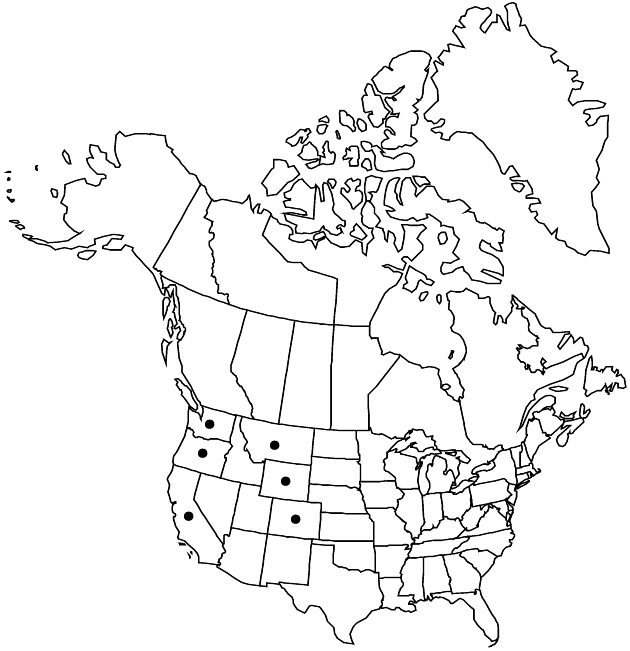Crepis occidentalis subsp. conjuncta
Publ. Carnegie Inst. Wash. 504: 134, fig. 22a–e. 1938.
Endemic
Plants 5–20 cm. Stems (branched proximally) tomentose (not stipitate-glandular). Leaves 10–18 × 3–4 cm, deeply pinnately lobed (lobed remote, lanceolate or linear, entire or dentate). Heads 2–9. Peduncles tomentulose, eglandular. Phyllaries 8–12, tomentulose, eglandular, often glabrous distally. Florets 12–40. Cypselae dark brown.
Phenology: Flowering Jun–Jul.
Habitat: Ridgetops, black shale hills, volcanic aggregate, gravelly soils
Elevation: 1400–2100 m
Distribution

Calif., Colo., Mont., Oreg., Wash., Wyo.
Discussion
Selected References
None.
Lower Taxa
None.